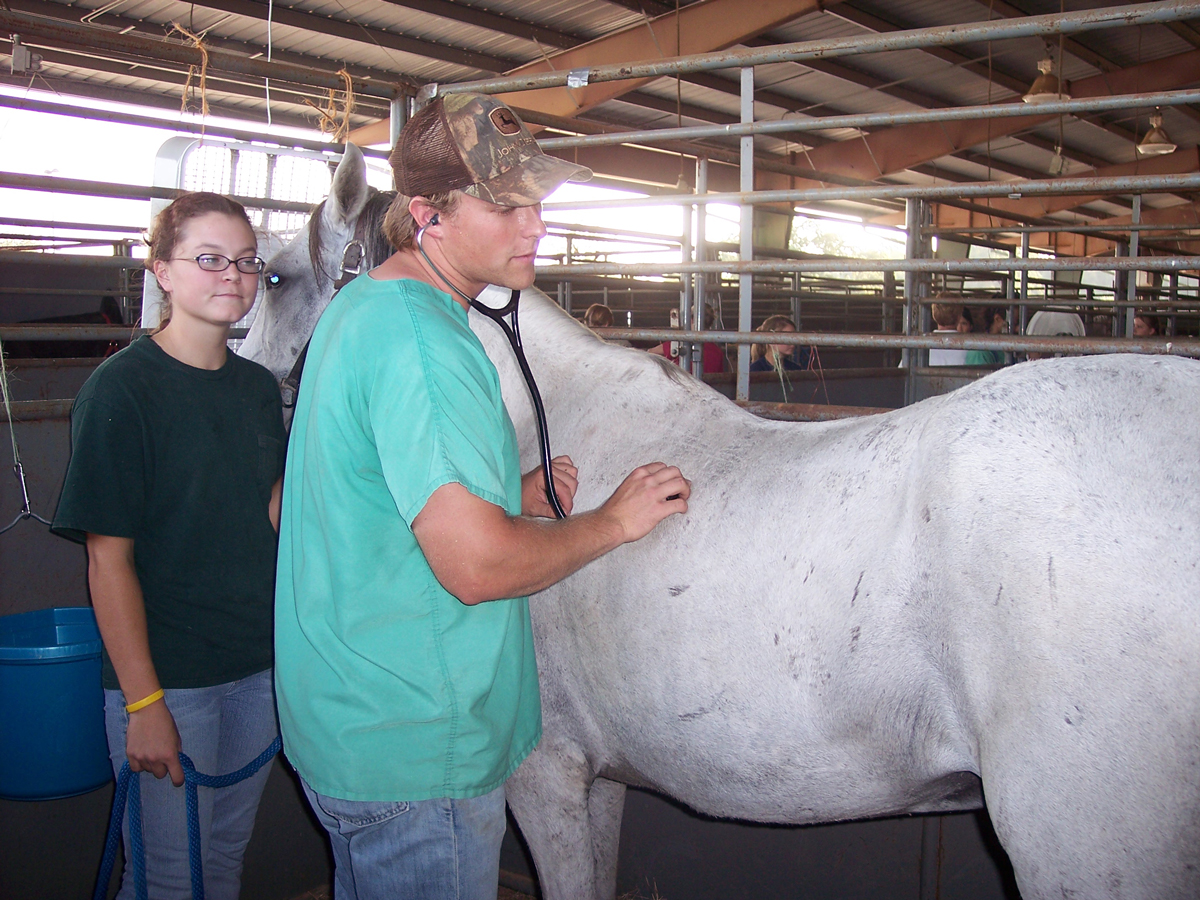Katrina at 20
20 heroic tales of people helping animals
as told to Sandra Sarr, LSU Vet Med strategic communications
Dan Burba, Oklahoma State University Vet Med McCasland professor of biomedical lasers

DVM student Nelson Lewis examining a horse at the Lamar-Dixon Expo Center.
“When Hurricane Katrina entered the Gulf, serious discussions began at the vet school. Calls started coming in from citizens who had evacuated and couldn’t get back to their animals. Our hospital shut down and we went into emergency duties, setting up a command center. We took calls from pet owners and organized groups needing help for animals. I set up the large animal area at Lamar Dixon Expo Center and worked there and in the LSU Vet Med hospital. Veterinarians showed up from all over the country to help. Our students helped triage and care for horses.
About a week after the hurricane, we followed a military convoy into New Orleans with two trucks and a trailer to help get French Quarter carriage mules out to safety. The mules had been running loose and a sheriff’s posse corralled them into a lumber yard near Elysian Fields. We tried to take the Elysian Fields exit off of I-10 but it was under water. Louisiana Wildlife and Forestry came in an airboat asking if we needed help. We needed to go around the Superdome. It was late afternoon and dark was coming. We had the first version of cell phones, and they didn’t work. No one was at the Dome—they’d been relocated. The grounds were full of trash. There were abandoned police cars with no tires. Gunfire filled the air. People were desperate. There were guys on roofs shooting at military on the ground. We were lost. We couldn’t figure out which way to go. Signs had blown off. An SUV pulled up with rifles sticking out of the windows. They had military uniforms on, weapons drawn. They asked what we were doing. We asked how to get to our destination to pick up the mules. They took us as far as a checkpoint at Harrah’s near Canal Street, a block from the Mississippi River. The city was about to shut down on curfew at dark.
We pulled up to a building with an open lot and there they were, five mules. We backed up our trailer and, out of nowhere, a man came and said, ‘Thank God you’re here. I’ve been keeping an eye on them hoping someone would come.’ We asked if he wanted to come with us. All he wanted was news of what was happening out there in the city. We loaded up the mules. None were injured. We wondered if we could get out of New Orleans. Helicopters were everywhere—there was an Apache attack helicopter refueling in midair. We had to get back to the interstate and wound through back streets lined with collapsed brick buildings, military of street corners. We got onto an overpass and onto the interstate. By the time we got the mules to Lamar Dixon, it was getting dark.
Not all horses made it. Many survived if they could roam free. They could often graze. It was sad when we found horses locked in stalls drowned. Ky Mortensen, Leslie Talley, and I did an aerial recognizance mission in a U.S. Coast Guard helicopter to locate horses on levees and gave GPS coordinates to military sent to drop food and water for starving animals. The camaraderie between those of us who stepped up to help animals when needed is remarkable. We have a special bond.
I relive Katrina every year when I teach a course about lessons learned. Many had no idea what to do. What we learned has changed animal rescue and response. It was a gamechanger. People now know what to do to get ready and help.”